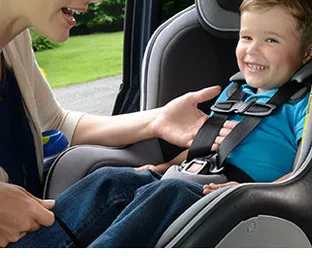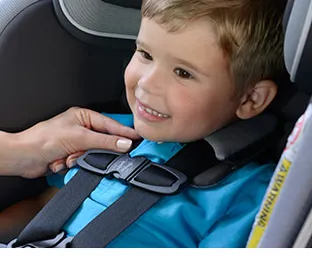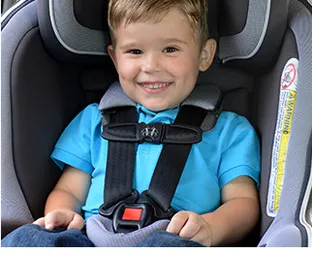CAR SEAT SAFETY
How to Safely Buckle a Car Seat for the Best Fit & General Car Seat Safety
At Chicco, child safety is our priority – especially when it comes to riding in the car. That’s why we're committed to helping parents and caregivers learn the ins and outs of proper car seat safety, including how to buckle your child in a car seat properly and what you should know about car seat safety.

Tighten the Harness
Buckle the harness and chest clip then put your hand behind the clip to eliminate slack in the webbing. Tighten the harness until your hand is touching your child.

Test with a Pinch
If you can pinch any of the harness webbing between your fingers, it means the harness is too loose. When the harness is properly tightened, your fingers will simply slip off.

Chest Clip Height
To ensure your child's chest clip is at the correct height, line it up with the top of his armpits. When properly positioned, the chest clip is designed to keep the harness straps parallel over the torso in a crash.
DID YOU KNOW?
Do Winter Coats Interfere with Car Seat Harnesses?
Yes, you should avoid buckling your child with a winter coat on since the bulky fabric could prevent a tight harness fit. Instead, buckle and tighten in without a coat, then put the coat on backward or use a blanket.
 INCORRECT
INCORRECT
 SPACE CREATED BY COAT
SPACE CREATED BY COAT
 CORRECT
CORRECT
When to Make a Change
There's no reason to rush from rear-facing to forward-facing, or from a five-point harness to a belt-positioning booster. Keep your little one in his current car seat as long as possible until he reaches the maximum weight or height allowance from the manufacturer, whichever comes first.
Maturity Matters
As you consider making the move to a belt-positioning booster, remember that age and maturity are as important as height and weight. Since belt-positioning boosters rely on the vehicle seat belt for restraint—rather than a 5-point harness—your child must be able to sit relatively still and keep the seat belt properly positioned on her body throughout every car ride.
How to use a Booster Correctly
The vehicle lap belt should lie flat across your child's upper thighs—not across the soft abdomen—and the shoulder belt should cross over the middle of her shoulder and across the center of her chest.

Graduating From a Booster Seat
Children are usually ready to move from their booster directly into the vehicle seat anywhere between 9 and 12 years-old. To see if your child is ready, buckle her into the vehicle seat and make sure her back and bottom are pushed all the way against the backrest. If her knees bend naturally at the edge of the seat, the vehicle lap belt fits across her upper thighs or low on the hips and the shoulder belt fits across her shoulder and chest, she no longer needs a booster.